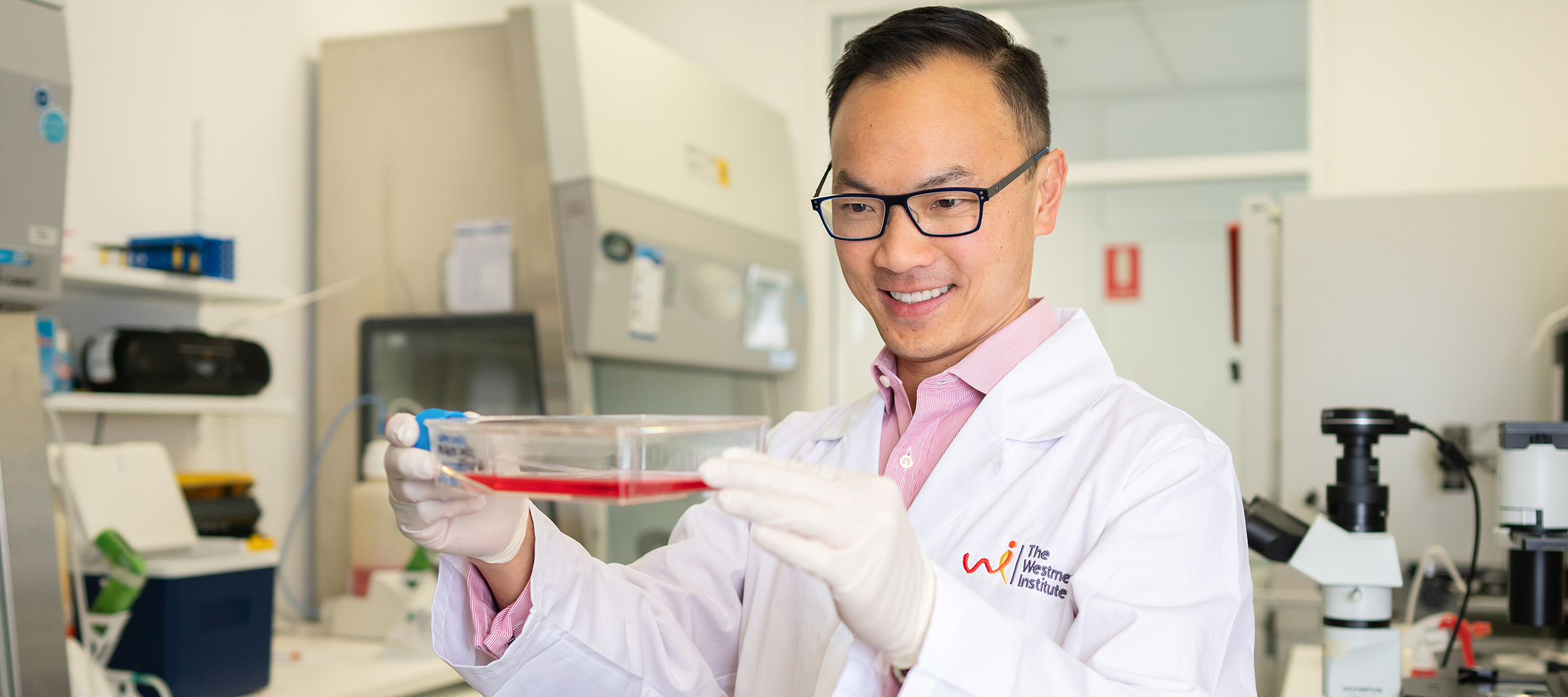While there are good treatments if a heart attack is caught early, silent heart attacks, or delays in getting to hospital, can cause extensive scarring of the heart muscle. This scarring weakens the heart muscle increasing the risk of heart failure and dangerous rhythms in the period after the heart attack. To date there has been very little treatment available to patients for scarring of the heart.
A/Prof. James Chong’s new research could revolutionise the prognosis of patients with heart scarring. It shows that protein therapy, using a protein derived from human blood called rhPDGF-AB, can significantly improve the function of a scarred heart. When tested on pigs, who have a similar heart to humans, it lead to a 40% increase in the survival rate after a heart attack.
Dr Robert Hume, from the research team, used our Leica SP8 multi-photon microscope at the University of Sydney to image collagen in scarred pig hearts. This showed that the protein treatment straightened the scar tissue and led to improved heart function.
“This is an entirely new approach with no current treatments able to change scars in this way.
“By improving cardiac function and scar formation following heart attack, treatment with rhPDGF-AB led to an overall increase in survival rate in our study.
“While the treatment did not affect overall scar size, importantly we found that rhPDGF-AB led to increased scar collagen fibre alignment and strength. This improved heart function after the heart attack.”
– A/Prof. James Chong

A/Prof. James Chong at Westmead Institute for Medical Research.
He continued by saying “Heart disease is the leading cause of death in Australia. It is thought that more than 400,000 Australians have had a heart attack at some stage in their lives and that there is roughly one heart attack every 10 minutes. Through our research, we have the opportunity to change the negative impact of these statistics.
“Some further animal studies are required to clarify safety and dosing. Then we can start looking towards clinical trials in humans very soon. rhPDGF-AB is clearly a promising therapeutic option, and could potentially be used alongside existing treatments to improve heart attack patient outcomes and survival rates.
“We now hope to further investigate the treatment, including whether it could be used in other organ systems impacted by scar tissue, such as the kidneys.”
This research was conducted in collaboration with University of Sydney, The Victor Chang Cardiac Research Institute, Westmead Hospital, Kolling Institute of Medical Research and QIMR Berghofer.
Thavapalachandran, S., Grieve, S. M., Hume, R. D., Le, T. Y. L., Raguram, K., Hudson, J. E., … & Brown, P. (2020). Platelet-derived growth factor-AB improves scar mechanics and vascularity after myocardial infarction. Science Translational Medicine, 12(524). https://doi.org/10.1126/scitranslmed.aay2140
Second harmonic generation micrograph by Dr Rob Hume shows a scar in a pig's heart caused by an induced heart attack. Treatment with rhPDGF-AB has improved the alignment of collagen fibres.
January 28, 2020